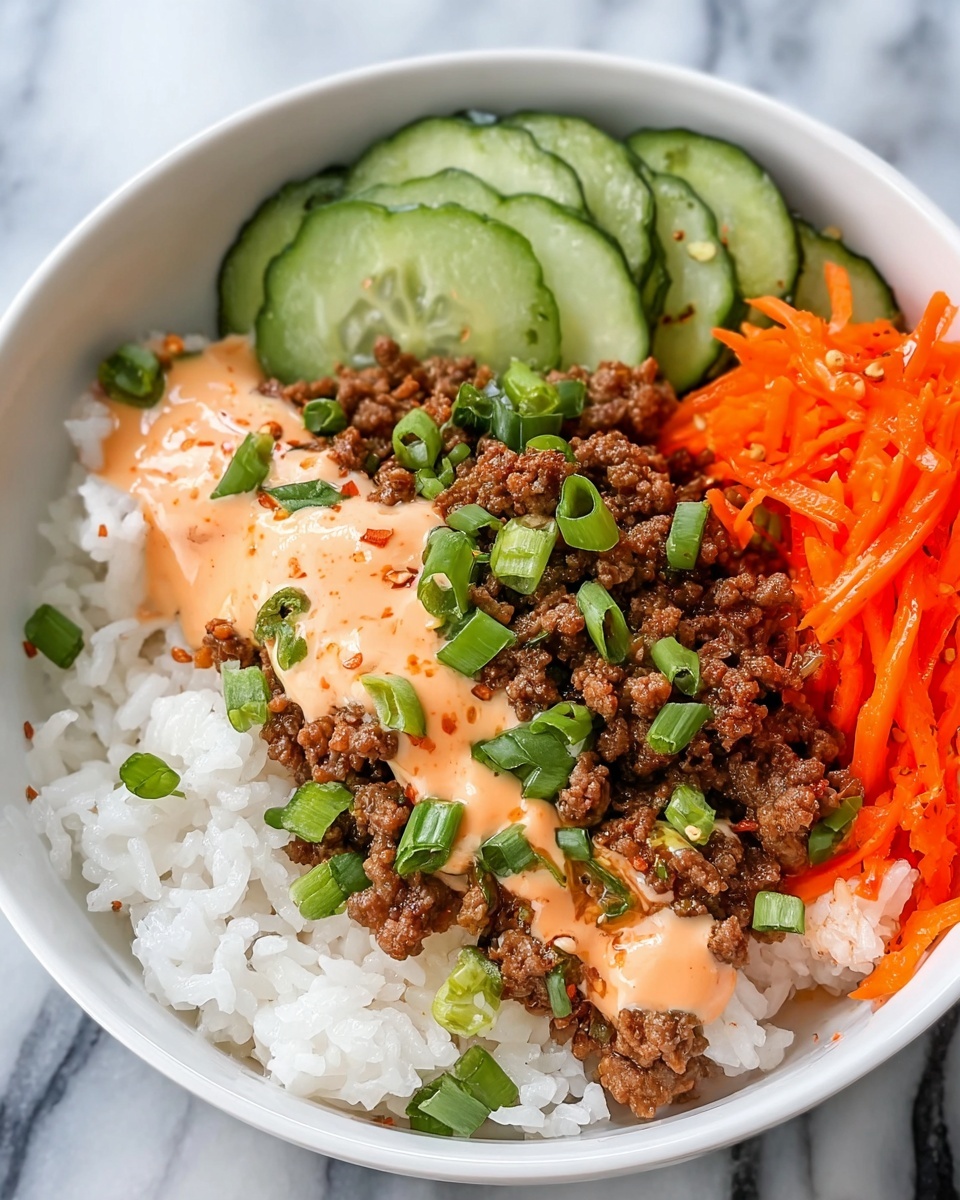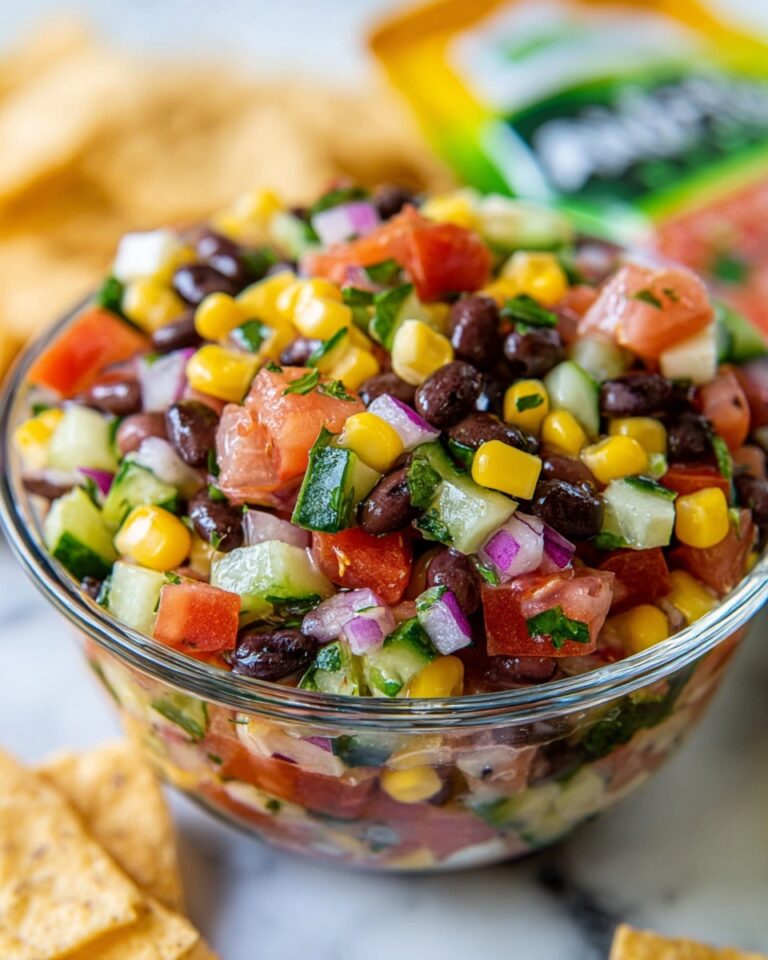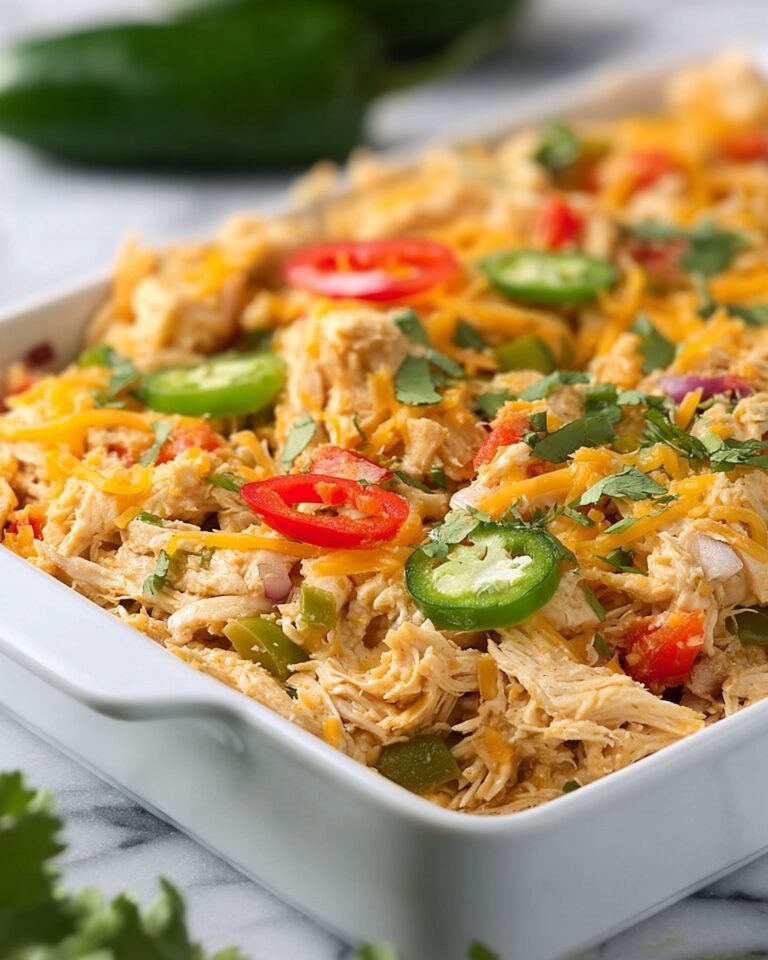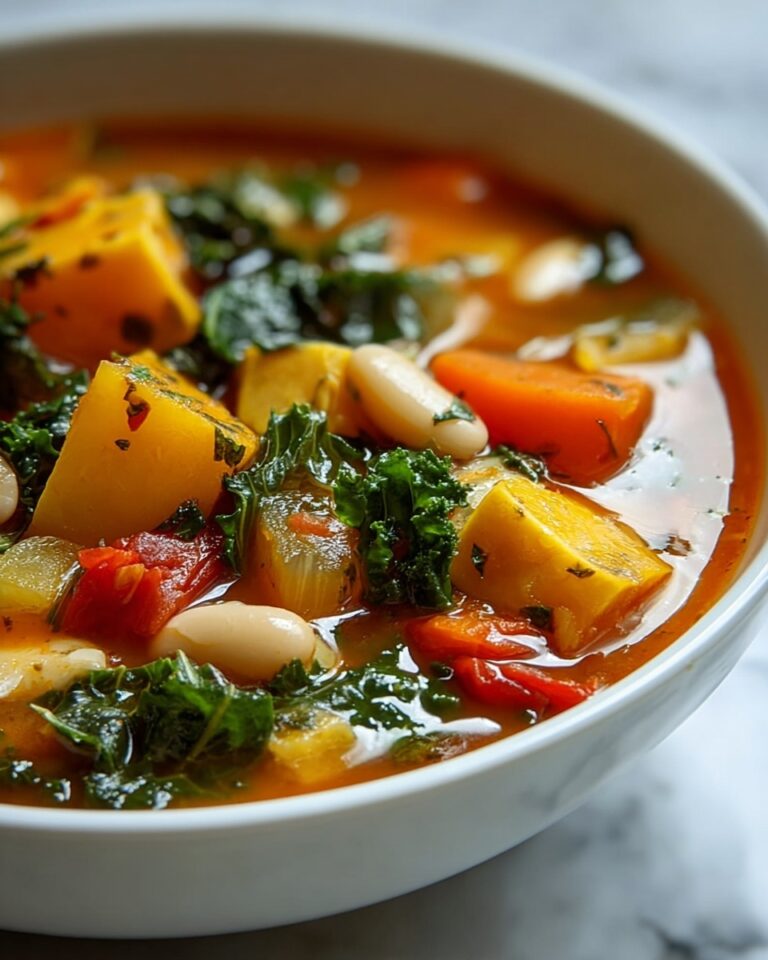If you’re craving a dish that bursts with flavors while coming together effortlessly, then you’re in for a treat with this Korean Beef Rice Bowls Recipe. Combining the rich, savory taste of marinated minced beef with the freshness of crunchy vegetables and the comforting base of jasmine rice, it’s a complete meal that satisfies every time. It’s wonderfully balanced with a hint of sweetness, spice, and tang, making it one of my all-time favorites to whip up on busy nights or to impress friends at casual gatherings.
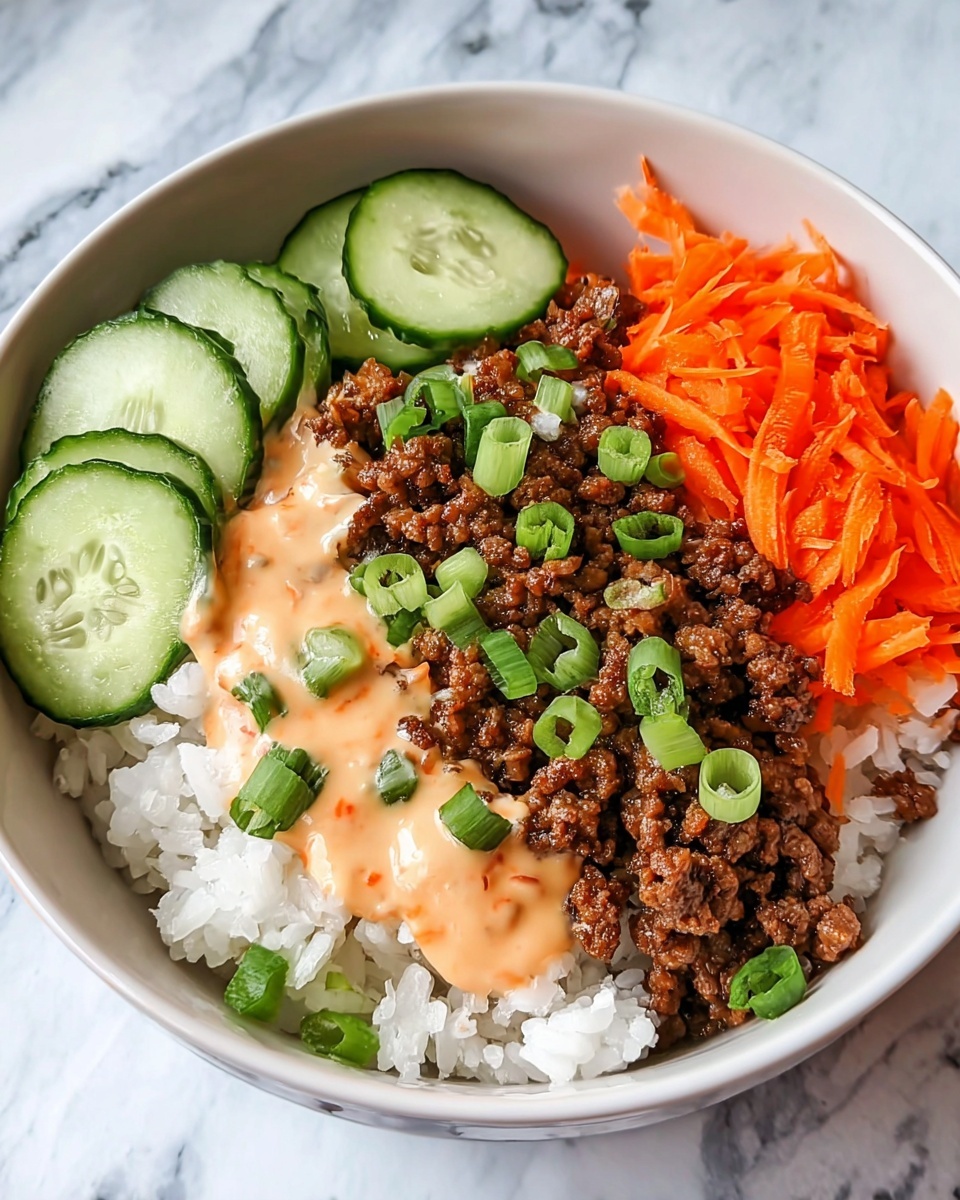
Ingredients You’ll Need
The magic of this Korean Beef Rice Bowls Recipe is in its simplicity and quality ingredients, each carefully chosen to contribute to the unique balance of flavors and textures. From the depth of soy sauce and the zing of fresh ginger to the creamy touch of gochujang mayo, these staples are essential to bringing the dish alive.
- Freshly grated garlic (1 tsp): Adds bold aroma and depth to the beef marinade.
- Freshly grated ginger (1 tsp): Injects a subtle warmth and sharpness that brightens the dish.
- All-purpose soy sauce (3 tbsp): Provides a salty umami foundation essential for the rich beef flavor.
- Brown sugar (2 tbsp): Balances savory tastes with a gentle caramel sweetness.
- Sesame oil (1 tbsp): Offers a toasty nuttiness that enhances aroma and depth.
- Gochujang (1 tbsp): A spicy Korean chili paste that adds both heat and complexity (adjust to taste).
- Rice vinegar (1 tsp): Introduces a mild acidity to brighten the overall flavor profile.
- Sesame seeds (1 tbsp plus extra): Adds delightful crunch and a nutty finish for garnish.
- Extra-virgin olive oil or neutral oil (2 tbsp): Used for cooking the beef perfectly.
- Minced (ground) beef, 500 g (1 lb 2 oz): The hearty protein star of the dish.
- Spring onions (2), finely sliced: Offers fresh, mild onion notes with color contrast (reserve some for garnish).
- Whole-egg mayonnaise (3 tbsp): Base for a creamy gochujang mayo sauce that complements the beef.
- Gochujang (1 tsp): Added to the mayo for a spicy, creamy kick.
- Sesame oil (½ tsp): Incorporated into mayo to keep the flavors cohesive.
- Rice vinegar (½ tsp): Adds a touch of acidity to the mayo sauce for balance.
- Cooked jasmine rice (2 cups / 370 g): Soft and fragrant base to soak up all the delicious juices.
- Kimchi (1 cup / 240 g): Provides a zesty, fermented crunch to brighten up the bowl.
- Carrot, julienned (1): Adds vibrant color and crisp texture.
- Lebanese cucumber, sliced into half moons (1): Delivers refreshing coolness to balance the spicy beef.
How to Make Korean Beef Rice Bowls Recipe
Step 1: Prepare the Gochujang Mayo
Start by mixing the whole-egg mayonnaise, gochujang, sesame oil, and rice vinegar in a small bowl. This creamy, spicy sauce will be a luscious topping that perfectly complements the savory beef, so whisk it well until smooth and set aside.
Step 2: Cook the Beef
Heat your oil in a large pan over medium-high heat. Add the freshly grated garlic and ginger and sauté for about 30 seconds until fragrant—this is the aroma that sets the tone for the whole dish. Then add the minced beef, breaking it apart as it cooks. Stir in the soy sauce, brown sugar, sesame oil, gochujang, and rice vinegar, allowing the beef to caramelize and soak up all these beautiful layers of flavor. Cook until the beef is browned and slightly sticky, about 6 to 8 minutes.
Step 3: Prepare the Vegetables and Rice
While the beef is cooking, prepare the rest of the bowl. Julienned carrots and cucumber slices should be fresh and crisp. Finely slice the spring onions, reserving some for garnish. Make sure your jasmine rice is warm and fluffy to provide a soft bed for the other ingredients.
Step 4: Assemble the Bowls
In each serving bowl, start with a generous scoop of jasmine rice. Top it with the flavorful Korean beef, followed by a portion of kimchi, julienned carrots, and sliced cucumbers. Drizzle the gochujang mayo over the top, sprinkle with sesame seeds and reserved scallions, and give everything a little shine with a few drops of sesame oil if desired.
How to Serve Korean Beef Rice Bowls Recipe
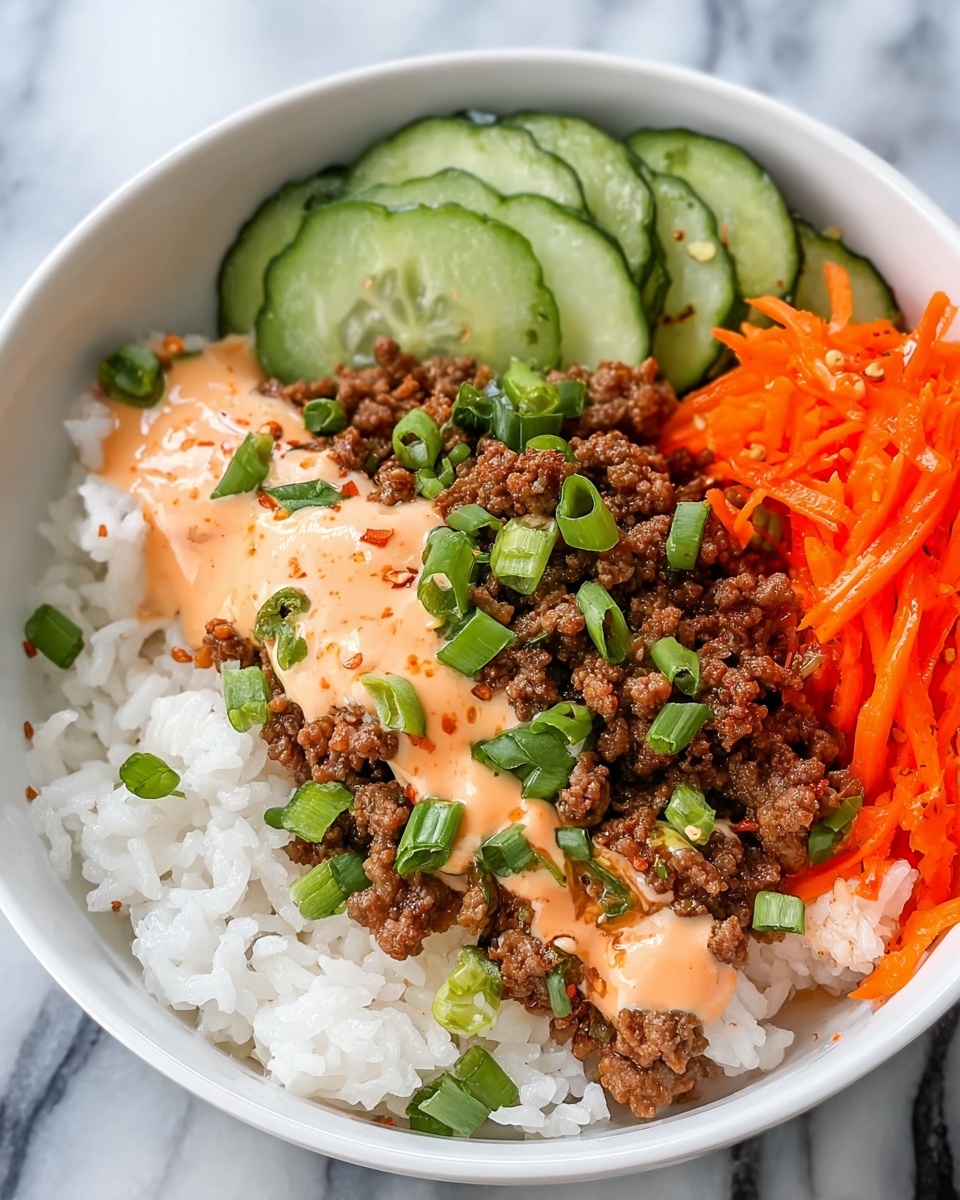
Garnishes
The garnishes are not just for looks—they add incredible texture and aroma to this dish. Extra toasted sesame seeds provide a nutty crunch, while the finely sliced spring onions deliver a fresh, mild pungency. A small drizzle of sesame oil over the top just before serving heightens the aroma and gives a beautiful sheen to your bowl.
Side Dishes
This Korean Beef Rice Bowls Recipe pairs delightfully with simple sides like steamed or stir-fried greens, pickled vegetables, or even a light soup such as miso or Korean seaweed soup. Adding a side of extra kimchi or a crisp cucumber salad can increase the layers of flavor and add refreshing contrasts.
Creative Ways to Present
If you want to elevate your presentation, serve the beef over a bed of mixed grains like barley or brown rice for a nuttier base. You might also serve components separately in a “build-your-own bowl” style, letting everyone customize their levels of gochujang or kimchi. For gatherings, small individual bowls or even lettuce wraps featuring the Korean beef make fun, interactive options.
Make Ahead and Storage
Storing Leftovers
Leftovers from this Korean Beef Rice Bowls Recipe are best stored in an airtight container in the fridge for up to 3 days. Keep the kimchi and gochujang mayo separate if possible to maintain their freshness and avoid sogginess.
Freezing
The cooked Korean beef freezes well, so if you want to meal prep, portion the beef into freezer-safe containers or bags and store for up to 3 months. However, avoid freezing the rice or fresh veggies as they can lose their texture upon thawing.
Reheating
To reheat, warm the beef gently in a pan over low heat or in the microwave until heated through. If your rice has hardened, sprinkle a little water on it and cover to steam as you warm it. Add fresh veggies and gochujang mayo just before serving to retain that fresh crunch and creamy texture.
FAQs
Can I substitute the gochujang if I don’t have it?
Absolutely! If you don’t have gochujang on hand, you can mix a bit of chili paste or sriracha with a little miso paste and brown sugar to mimic its sweet-spicy depth, though it won’t be exactly the same.
Is ground beef the only option for this Korean Beef Rice Bowls Recipe?
Not at all. You can swap ground beef for ground pork, chicken, or turkey if you prefer a different protein, though the beef’s richness really makes this dish shine.
Can I make this recipe vegetarian or vegan?
For a vegetarian version, consider using finely chopped mushrooms or crumbled tofu in place of the beef, and swap the mayo for a vegan variety. You’ll still get wonderful flavors; just cook the mushrooms well to maximize their umami.
How spicy is this recipe?
The heat level depends on how much gochujang you add. The base amount gives a nice mild spice, but feel free to adjust it to your taste—add more for a fiery kick or reduce it for a milder bowl.
What’s the best rice to use in this recipe?
Jasmine rice is preferred because of its fragrant aroma and slightly sticky texture, which complements the beef beautifully. However, short-grain white rice or even brown rice can work well, depending on your preference.
Final Thoughts
I can’t recommend this Korean Beef Rice Bowls Recipe enough for anyone looking to add something new, tasty, and super satisfying to their weeknight rotation. It’s a dish that’s as approachable as it is flavorful, and the best part is how effortlessly everything comes together in one bowl full of texture, color, and bold Korean-inspired notes. Give it a go—you might just find a new favorite for your dinner table!
Print
Korean Beef Rice Bowls Recipe
- Prep Time: 10 minutes
- Cook Time: 15 minutes
- Total Time: 25 minutes
- Yield: 4 servings
- Category: Main Dish
- Method: Stovetop
- Cuisine: Korean
- Diet: Halal
Description
These Korean Beef Rice Bowls are a flavorful and quick meal perfect for busy weeknights. Ground beef is cooked with a savory and slightly spicy sauce featuring garlic, ginger, soy sauce, and gochujang, served over jasmine rice with fresh vegetables and kimchi for a delicious balance of tastes and textures.
Ingredients
Sauce and seasoning
- 1 tsp freshly grated garlic
- 1 tsp freshly grated ginger
- 3 tbsp all-purpose soy sauce
- 2 tbsp brown sugar
- 1 tbsp sesame oil
- 1 tbsp gochujang (adjust for spice preference)
- 1 tsp rice vinegar
- 1 tbsp sesame seeds, plus extra to garnish
Main ingredients
- 2 tbsp extra-virgin olive oil or neutral oil
- 500 g (1 lb 2 oz) minced (ground) beef
- 2 spring onions (scallions), finely sliced (1 tbsp reserved for garnish)
Mayonnaise mixture
- 3 tbsp whole-egg mayonnaise
- 1 tsp gochujang
- ½ tsp sesame oil
- ½ tsp rice vinegar
To serve
- 2 cups (370 g) cooked jasmine rice
- 1 cup (240 g) kimchi
- 1 carrot, julienned
- 1 Lebanese (short) cucumber, sliced into half moons
Instructions
- Prepare the sauce: In a bowl, combine the freshly grated garlic, grated ginger, soy sauce, brown sugar, sesame oil, gochujang, rice vinegar, and sesame seeds. Stir well to create a balanced, savory, and slightly spicy sauce.
- Cook the beef: Heat the extra-virgin olive oil or neutral oil in a large skillet over medium-high heat. Add the minced beef and cook, breaking it up with a spatula, until browned and cooked through, about 5-7 minutes.
- Add the sauce to beef: Pour the prepared sauce over the cooked beef in the skillet. Stir well to coat evenly, and simmer for 2-3 minutes to allow the flavors to meld and the sauce to thicken slightly.
- Prepare the mayo mixture: In a small bowl, mix together the whole-egg mayonnaise, gochujang, sesame oil, and rice vinegar until smooth. This will add creamy texture with a spicy kick to the bowls.
- Assemble the bowls: Spoon the cooked jasmine rice into bowls. Top with the spicy Korean beef, kimchi, julienned carrots, sliced cucumber, and sliced spring onions, reserving some green for garnish.
- Add finishing touches: Drizzle the prepared gochujang mayonnaise over the top and sprinkle with extra sesame seeds and the reserved spring onion slices for freshness and crunch.
- Serve: Serve these vibrant Korean Beef Rice Bowls warm, ideal for lunch or dinner, accompanied optionally by extra kimchi or a side of steamed vegetables.
Notes
- Gochujang is a Korean fermented chili paste that is mildly spicy and sweet. If unavailable, substitute with a mix of chili paste and miso or a mild chili sauce blended with some soy sauce.
- For a gluten-free option, ensure soy sauce is tamari or gluten-free soy sauce.
- You can customize the spice level by adjusting the amount of gochujang.
- Leftover beef mixture can be refrigerated and is great for wraps or lettuce cups.

